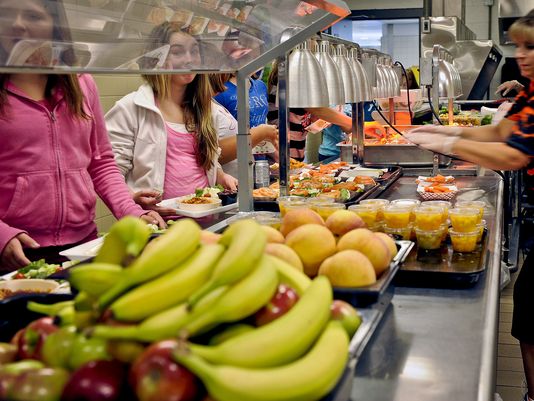
Share On Social!
This is part of our Healthier Schools & Latino Kids: A Research Review »
Conclusions
- When competitive foods are available, Latino students are more likely to purchase and consume these foods than their White peers. Access to competitive foods in schools associated with higher consumption of low-nutrient, energy-dense foods among Latino children and adolescents.
- While many school districts have a policy that addresses competitive foods, the policies influencing schools with a higher proportion of Latino students are generally weak, though this may decrease as districts comply with the national standards.
- Given initial evidence on the impact of restricting competitive foods during the school day on student consumption of foods of minimal nutritional value and obesity, Latino students may disproportionately benefit from specific nutrition standards for competitive foods in schools; such strong policies may positively influence BMI trends in this vulnerable population.
- Many of the findings in this paper apply to all students, but they are particularly relevant for the Latino population because of their high risk for overweight/obesity and low rates of physical activity.
- Although many of the above observations can be made in all children and adolescents without regard to race or ethnicity, these findings are particularly relevant for Latinos, due to the rising percentage of the U.S. Latino student population and the high risk for weight-related health problems among Latino children and adolescents.
- Structured school-based programs that incorporate culturally relevant messages and activities have demonstrated some success in increasing physical activity among Latino children, though many majority Latino schools are still not compliant with physical activity requirements.
- Encouraging participation in and creating opportunities for participation in school sports among Latino/Latina students is also important, as this student population is less likely to participate in after-school sports and activities.
- Many majority Latino schools are located in highly-trafficked urban areas, which discourages children from walking or biking to school. Creating safer travel environments may allow for active transportation to school, providing students with additional opportunities for physical activity.
Policy Implications
The findings of this review have several implications for legislators, policymakers, school administrators, and community members seeking to increase physical activity in Latino children:
- Current national nutrition standards for competitive foods should be consistently applied, in all schools, regardless of location or student demographics.
- Because many schools with a high proportion of Latino students have not historically had strong competitive food policies, policymakers should prioritize helping schools in Latino communities effectively implement the national standards.
- Public health initiatives (e.g., nutrition education programs) that consider the schools’ surrounding food environment and familiar cultural factors, such as convenience stores and mobile food vendors, may be especially beneficial in Latino communities.
- State and local governments and school administrators should implement school-based programs that provide opportunities for physical education and activity during the school day, before and after school, and during the summer to ensure year round activity.
- National, state, and local governments should encourage active transportation, creating a safe environment for children to walk or bike to and from school.
- Health departments should collaborate with school and community stakeholders to develop culturally relevant interventions to help Latino children become more active and achieve the recommended 60 minutes of daily physical activity for all children.
More from our Healthier Schools & Latino Kids: A Research Review »
- Introduction & Methods
- Key Research Finding: School food environment
- Key Research Finding: School food policies
- Key Research Finding: Physical activity
- Key Research Finding: Access to activity programs
- Policy Implications (this section)
- Future Research Needs
References for this section »
None
Explore More:
Healthy Families & SchoolsBy The Numbers
142
Percent
Expected rise in Latino cancer cases in coming years



